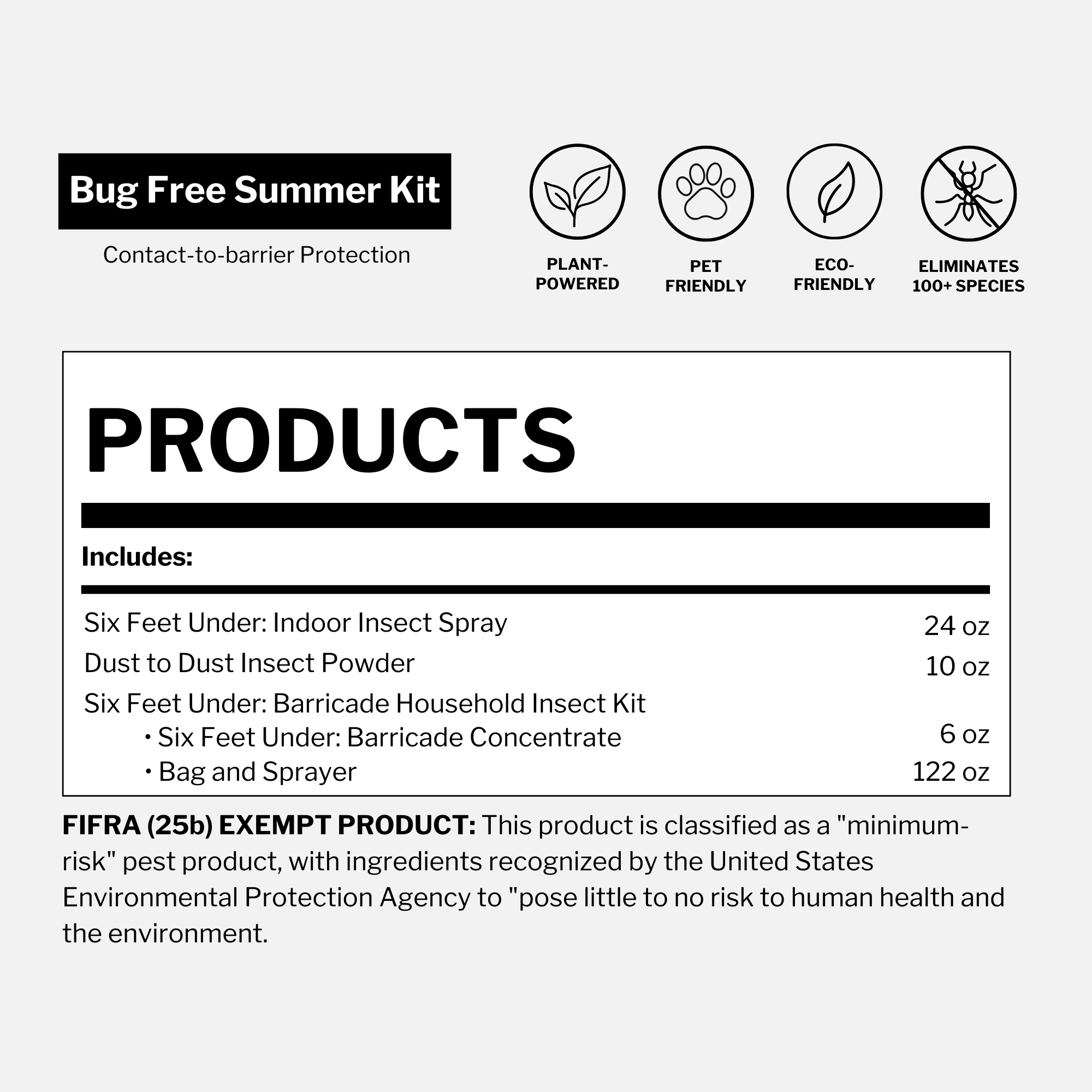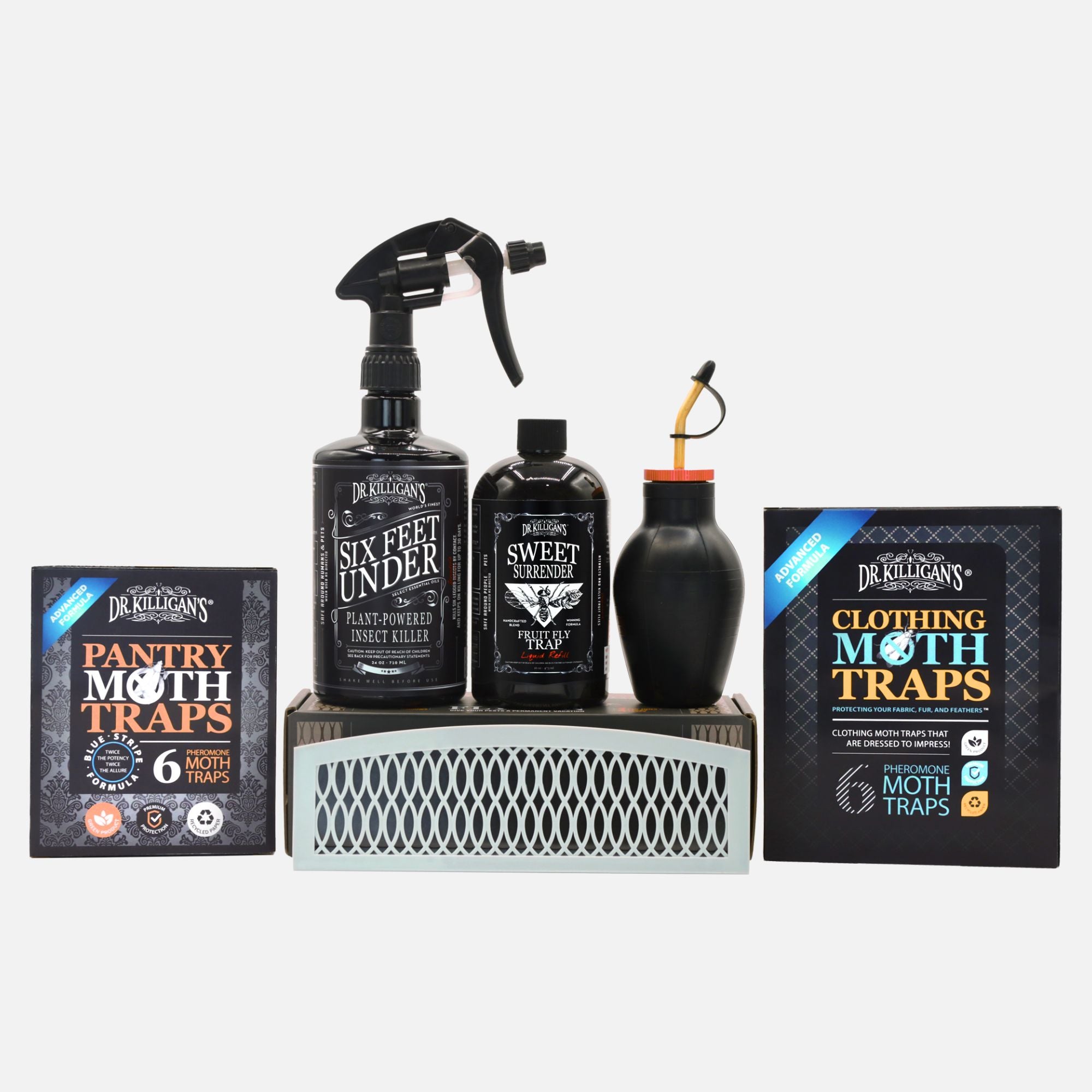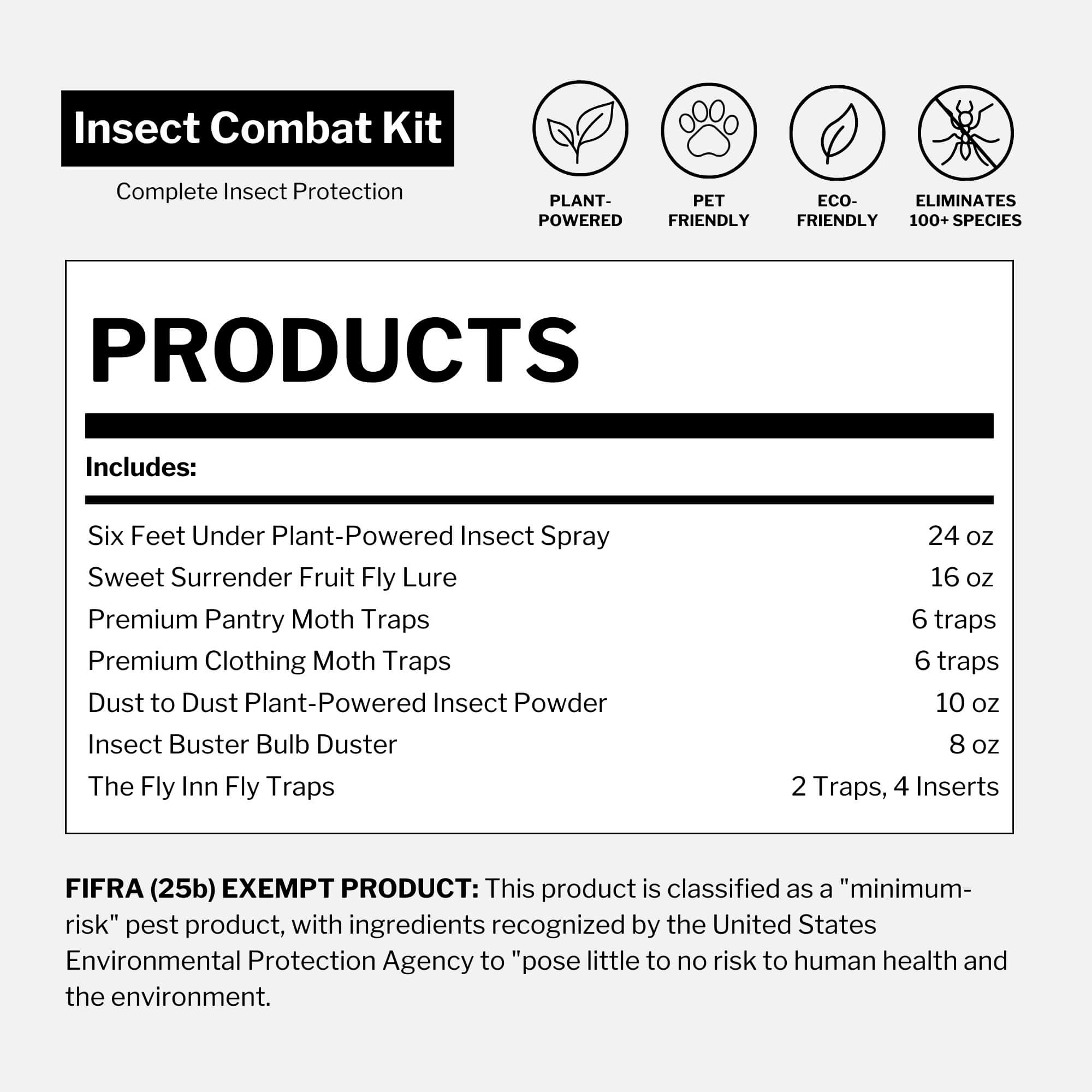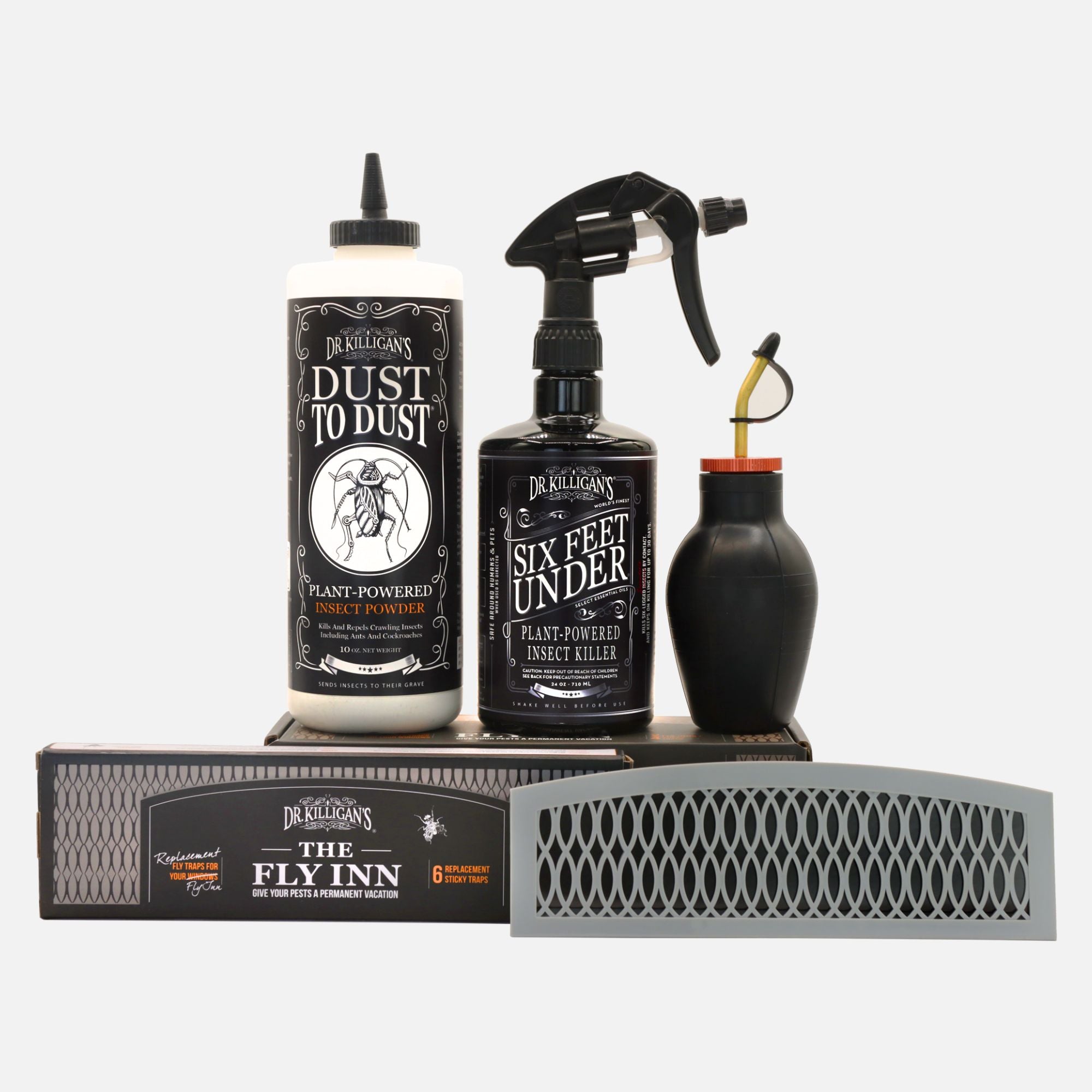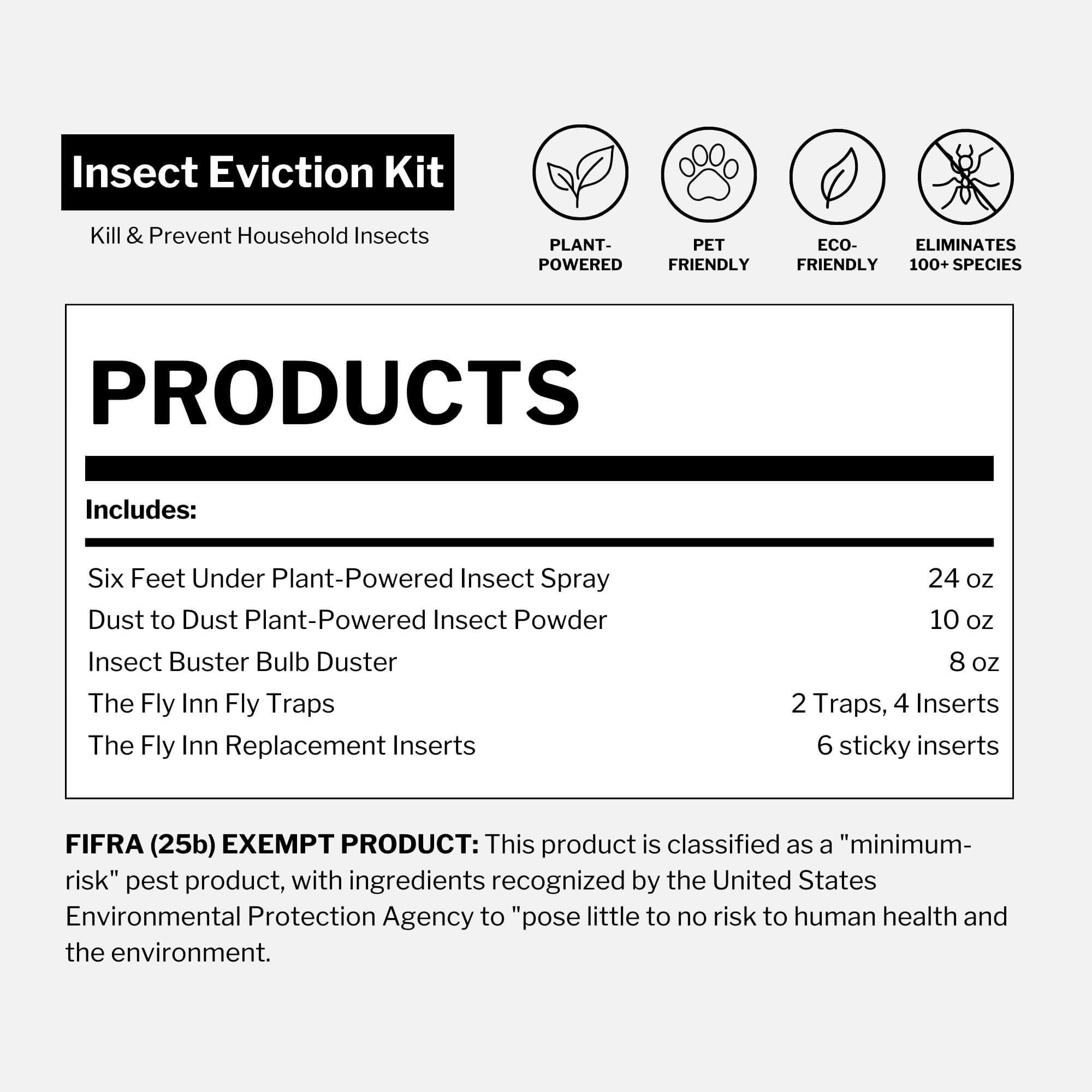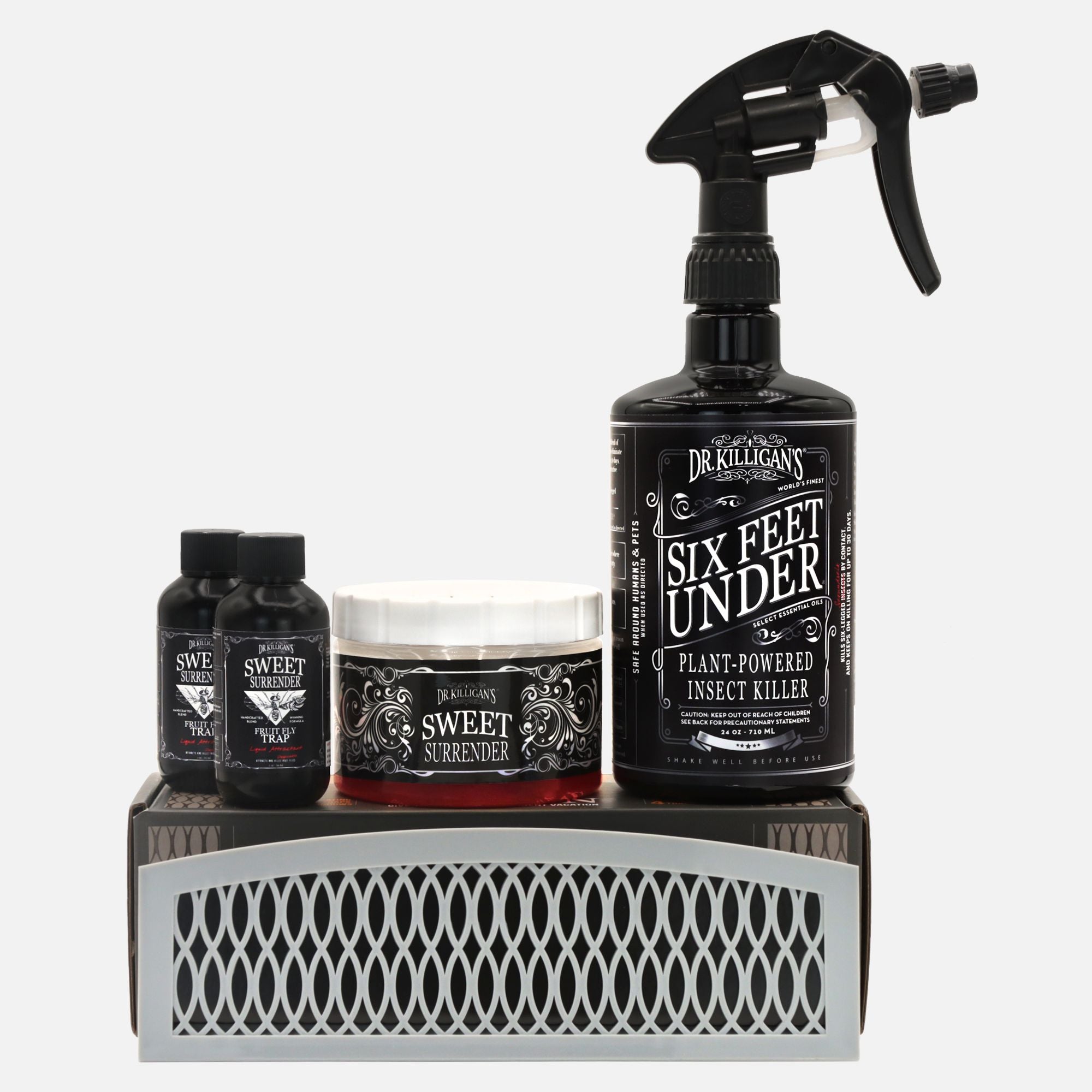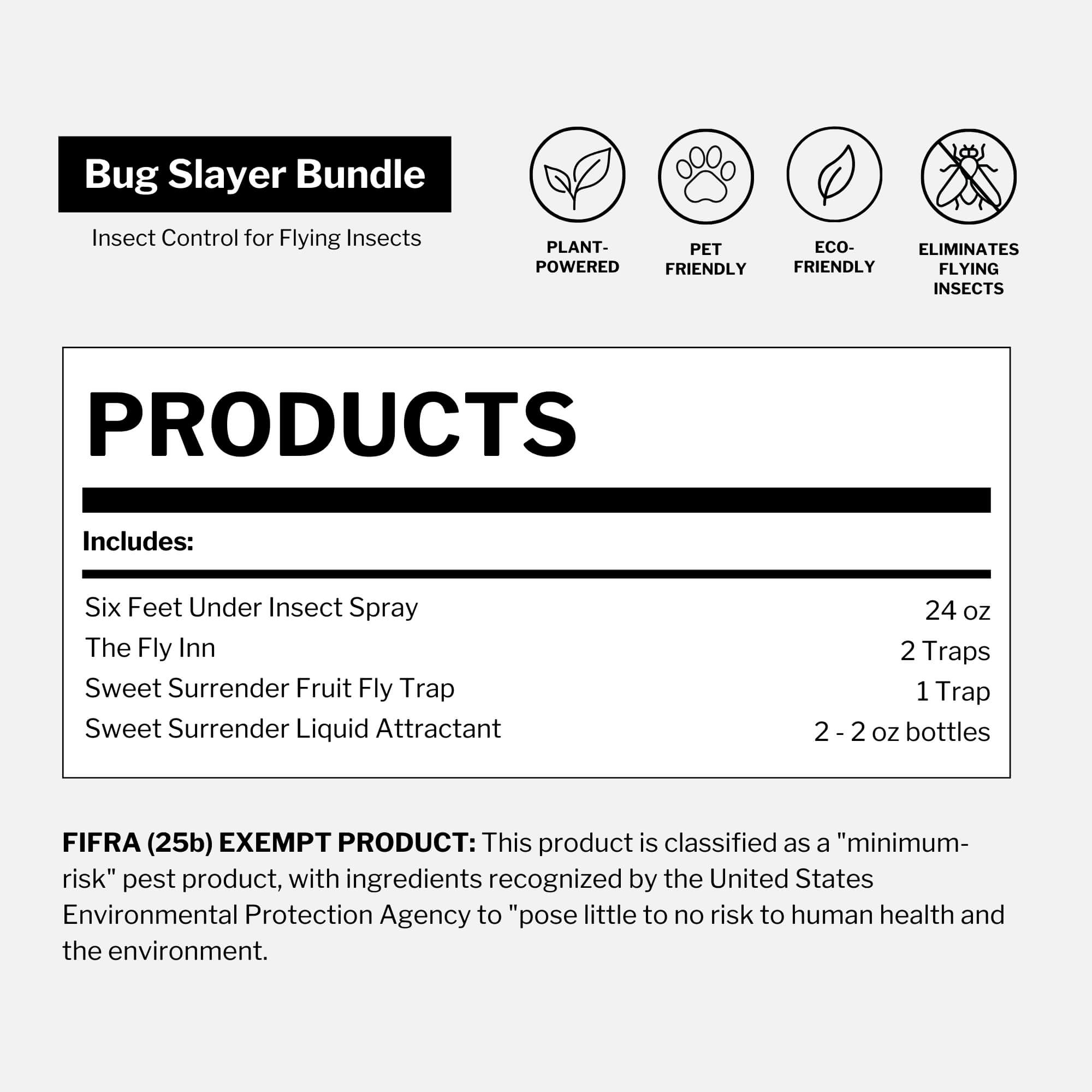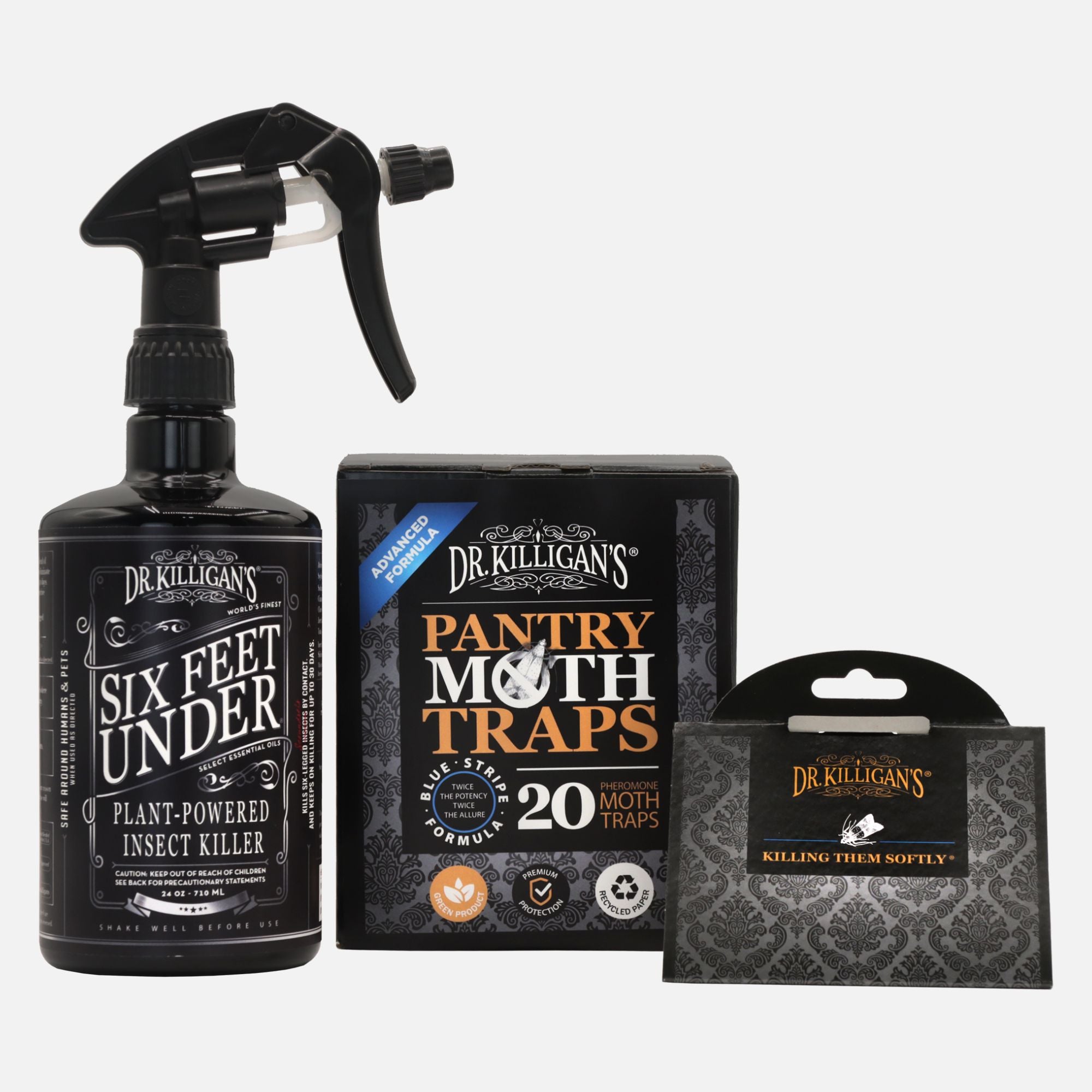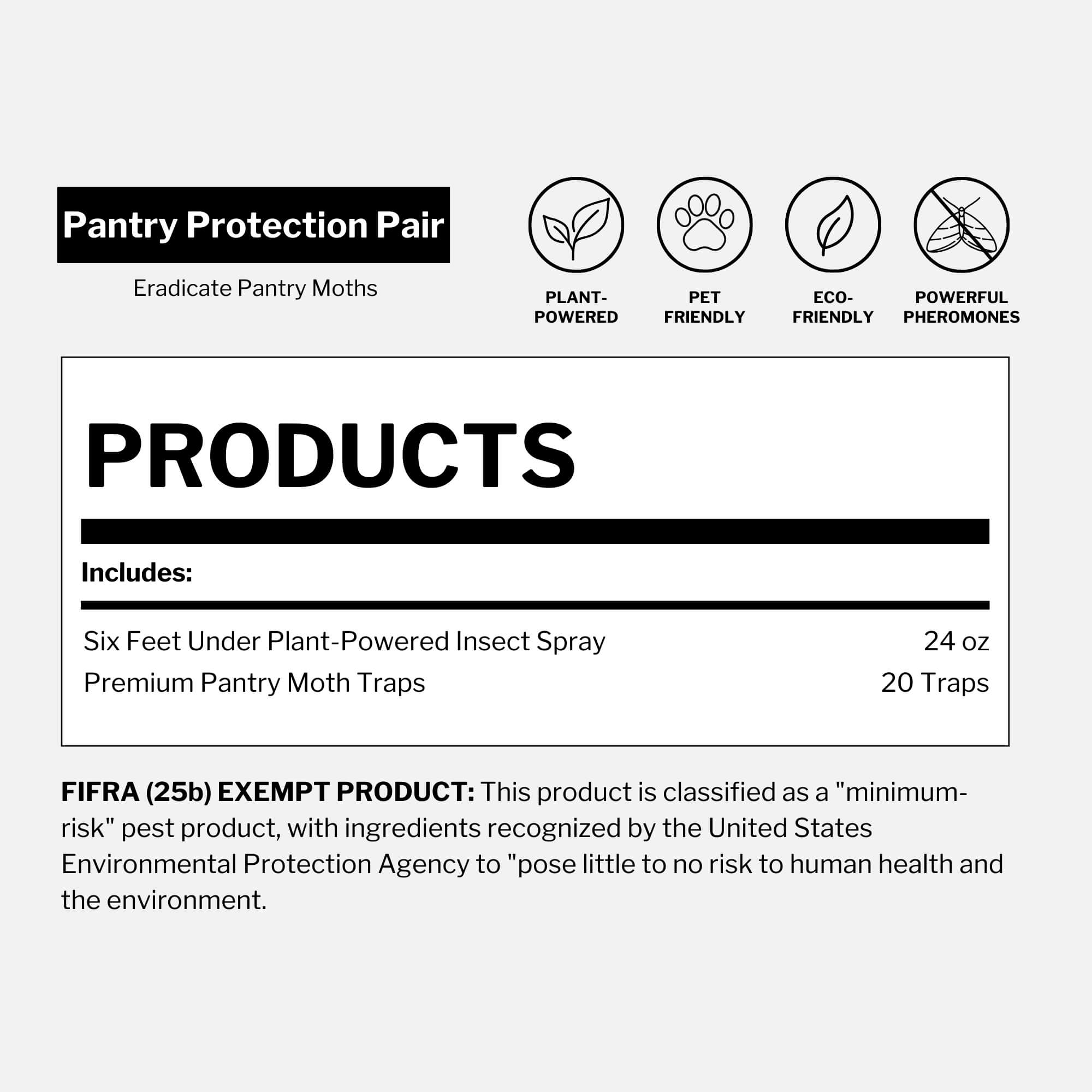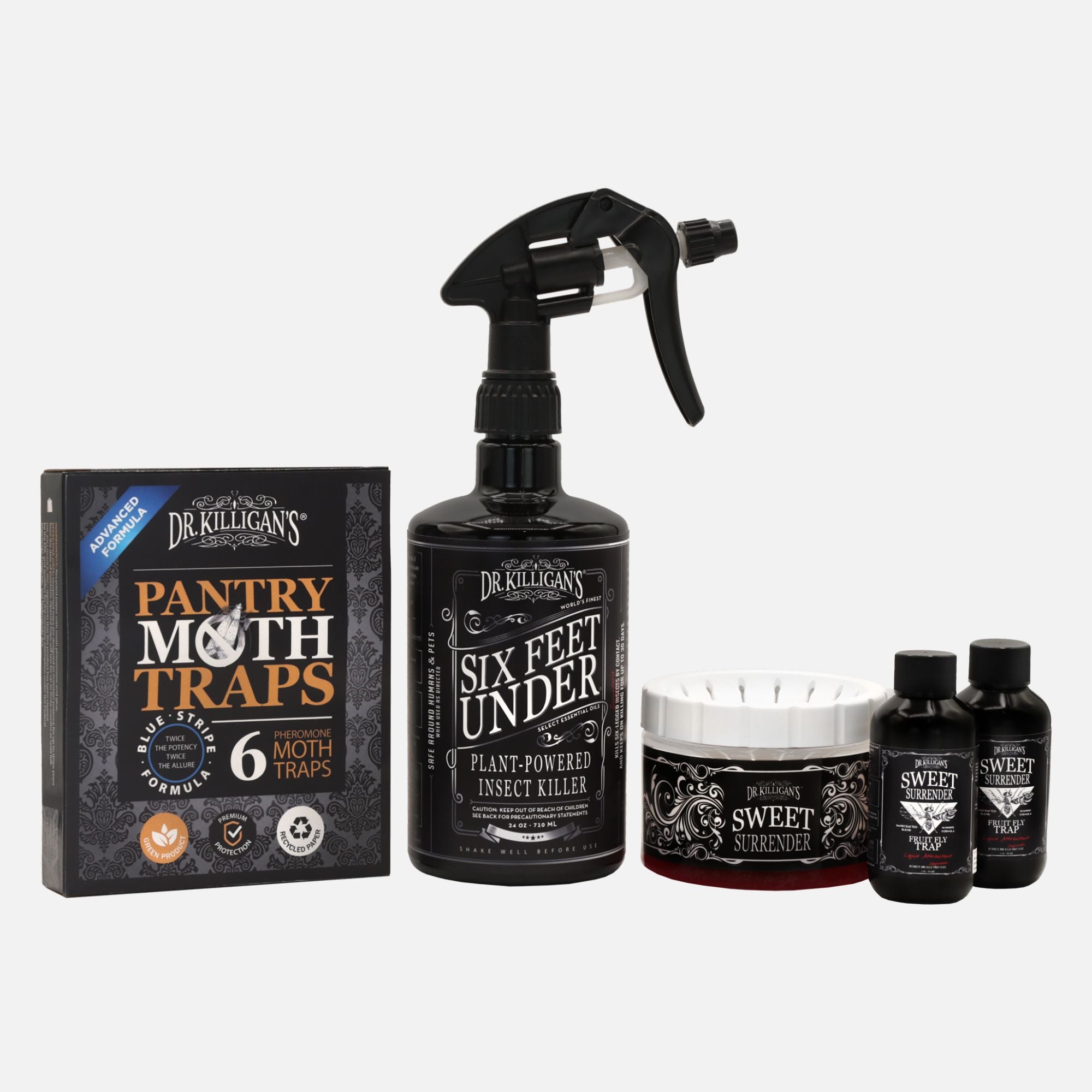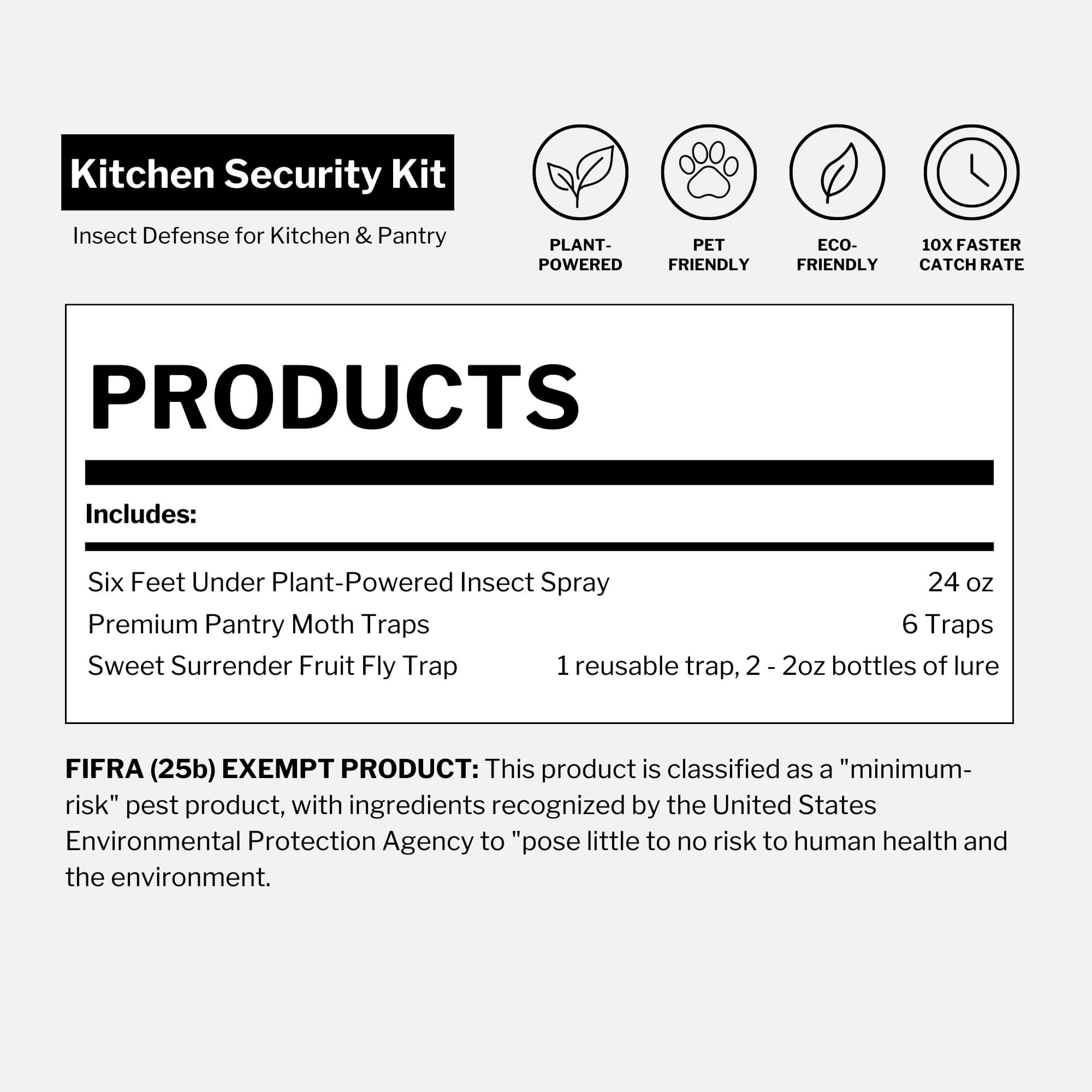Updated on October 21st, 2024
Like the internet, bugs are forever.
It’s likely that one day you’ll have an infestation of some sort on your hands, whether it be from ladybugs, ants, earwigs, cockroaches or other intrusive insects.
If you own birds or simply keep birdseed in your garage to feed the neighborhood flock, you’re likely to come across the notorious pantry moth—a tiny, fluttering enemy of households far and wide.
Why do I have moths in my birdseed?
Moths enjoy dry foods of all sorts, ranging from various types of birdseed, including wild and safflower variations to oats, cereal, corn and flour. When these dry goods are processed at a (food) plant or stored in a warehouse, they may become contaminated. It's surprising when you first notice a moth flittering around in your garage, originating unknowingly from a 25-pound bag of dry birdseed bought from the local pet food store. You dismiss this brown flutter, but then several days pass and now a small congregation of these flyers are in your garage.

Note: If your garage is attached to your home, pantry moths will gravitate towards other close-by-food-sources as well (and you may discover moths in your house).
Pantry moths are on a mission. Their sole life objective is to reproduce and reproduce they will, infesting places with an abundant food supply. Birdseed gives these moths a safe place to lay their eggs and provides their offspring with a rich diet of food on which to feast and grow.
When you see this unsightly congregation of flyers, it’s quite possible that they have already laid their eggs somewhere close by.
How do I know if they’re pantry moths?
To determine if you're dealing with pantry moths, first confirm the presence of moths at any stage—egg, larvae, (which looks like a wiggling worm) or adult moth stage. This is crucial as pantry pests can also include weevils, beetles and other bugs in your pantry.
- Weevils are brown and very tiny—about 1/16th of an inch—and mostly attracted to raw wheat, oats, barley, rye, rice and corn.
- Flour beetles are shiny, flattened, oval-shaped, 1/8 of an inch in length and reddish-brown. They are primarily attracted to flour, grains and grain products—like macaroni and cereals.
-
Carpet beetles have rounded bodies with varied striped shells of black, white, yellow or orange. They are roughly the size of bed bugs and are attracted to natural fibers but do not bite humans.

Once you’ve ensured that it's a moth, you must identify the species of moth. Though birdseed moths—also known as pantry moths and Indian meal moths—are the most common type of household pantry pest in the United States, there are also clothing moths and several types of house moths that can wreak havoc in your home.
Pantry moths can leave behind sticky secretions that cause clumping of grains and create webbing along the corners of packages or on the product inside. Their presence can also produce an unpleasant odor in your dried goods.
How do I get rid of these moths (in my garage and house)?
If birdseed is the source of your infestation, ensure that you are using plastic storage containers—free of any cracks or holes—that have airtight or rubber sealable lids. If you want to go a step further, bag your birdseed into smaller ziplock bags and store it in your freezer prior to use. In addition, always clean up any remnants of birdseed that surround your container.
If birdseed is not the source of your infestation, finding that source is a must. Once discovered, immediate removal is top priority, followed by vigorous cleaning, which includes the use of Six Feet Under and moth traps.

Tip: You can freeze infested birdseed (place it in the freezer for 48+ hours) and then still feed it to your birds, unless it is so heavily infested that much of the seed is consumed. Larvae provide a good protein source for birds.
I love feeding birds. I remember when I was in grade school, walking home from school one afternoon, when I stumbled across a bag of birdseed on my quiet street. Perhaps it had fallen off the back of someone’s truck. As I peered into its mess that was sprinkled like drops of rain all over the paved road and sidewalk, I saw movement. It was wriggling with larvae.
Despite the unexpected discovery, I happily scooped up an overflowing handful and brought it to my own front yard, eager to feed my neighborhood flock. This moment sparked my lifelong interest in bird feeding and pest management.
How do I protect my birdseed from moths?
Once you have successfully eradicated pantry moths from your home, it's crucial to prevent future infestations. Implement ongoing pest management by strategically placing Dr. Killigan's Premium Pantry Moth Traps in areas susceptible to infestation—such as your garage and pantry. These traps are non-toxic, effective for three months after opening, and can be stored unopened for up to three years.
Additionally, it's essential to cultivate an environment that discourages pest habitation. Do all that you can to keep pantry pests (and all pests for that matter) where they belong—in the great outdoors. Gird yourself with DIY pest control knowledge and take control of your home and yard today.
In summary, effective pest management is a continuous effort. Equip yourself with the necessary knowledge and tools to keep your home and yard free from pests. By taking proactive steps today, you can ensure a pest-free environment, protecting both your birdseed and your peace of mind.





